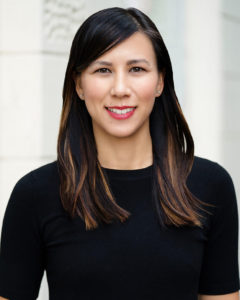By Barbra Dey, BSc Optom, COE

May 11, 2022
About 41.6 percent of Americans are nearsighted, up from 25 percent in 1971, according to the National Eye Institute. Projections suggest that almost 50 percent of the world will be myopic by 2050.
As myopia comes with an increased risk of retinal detachment, myopic macular degeneration, glaucoma and the early development of cataracts, treatments that can limit myopia progression are well worth it. The question is whether a myopia management niche is right for you and your practice.
In my work as a consultant, I have observed what makes myopia management the right fit for a practice. Here are good questions to ask yourself before deciding to launch these specialized services.
Do I Like Working With Children & Specialty CLs–& Am I Eager to Add Cash-Paying Services?
An OD who is passionate about pediatric eyecare, contact lenses, and the developments in treatment options for myopia control, is an ideal candidate for spearheading the launch of a myopia management clinic.
Currently, myopia management is a non-covered service under most managed vision care insurance plans. This is an opportunity to add a cash-pay service that provides huge value to your patients. Just ask a myopic parent if they would have appreciated this kind of program when they were children.
Do I Have the Income to Launch these New Services?
The cost to launch a program can be minimal. However, it’s a good idea to have at least $50,000 in available practice funds for the initial investment in equipment and needed training and marketing resources.
Many clinics already own a topographer, and depending on the software, there may be no further investment required starting out. Some ODs may decide that an A-scan or optical biometer to monitor changes in the axial length of the eye is an essential piece of equipment to have when they launch their program, although clinically these instruments are not yet widely used.
You should not be deterred from launching your program without a biometer, as it can be added once your patient numbers hit a certain threshold. Some practices account for the cost of the instrument in their myopia management fees to offset the monthly expense. I believe the value of monitoring axial length in our myopes will solidify this instrument as the standard of care in the next few years.
If space is an issue at your clinic, you could consider a combination corneal topography and biometry instrument like the Topcon Aladdin or the Pentacam AXL Wave. It is also beneficial to have a camera to take anterior segment photos and videos of Ortho-K lenses on the eye. These images can be helpful when troubleshooting a fit with the vendor. Many offices use a cell phone mounted onto their slit lamp. This is a cost-effective solution that can also be used for any anterior segment eye issue you encounter in clinic.
Other Articles to Explore
Used topographers and biometers can be purchased from online instrument stores like Eyecare Alliance or Insight Eye Equipment. You also could try reaching out to colleagues on OD social media sites to see if a doctor near you is selling the instruments you need.
In addition to equipment purchases, you also should budget for small marketing expenses you will be likely to incur, such as for visits to referring doctors, talks with local sports clubs and schools, as well as the cost of developing and printing educational and promotional materials for patient families and the referral systems you interact with.
Am I Willing & Able to Do the Necessary Doctor Training?
Doctors should be knowledgeable about the different modalities for treating myopia and be well read on what’s new in the field. Keeping abreast of what is happening in other parts of the world in myopia management will give you a greater grasp on what’s ahead for the U.S. market.
For example, Johnson & Johnson ACUVUE Abiliti 1-Day soft Therapeutic Lenses were released in Canada in early 2022, while ACUVUE Abiliti Overnight Therapeutic Lenses for Myopia Management received FDA approval in the U.S. in May 2021, and is currently being rolled out to select practitioners in the U.S. Also, Treehouse Eyes and Johnson & Johnson Vision have partnered to give patients access to this lens.
Learn More
At a more granular level, it’s likely that if you’re a more senior doctor, you were not exposed in optometry school to prescribing and treating using Ortho-K. The thought of learning how to fit these lenses can be intimidating. However, companies like Paragon not only provide excellent online training and certification courses, but are available to consult with ODs and help them troubleshoot problems that may arise during the fitting process.
Similarly, CooperVision’s Brilliant Futures Myopia Management Program, featuring the MiSight 1 day lens, provides an online certificate training program and has local representatives available to support eyecare clinic staffs via informal question-and-answer sessions and by providing them with marketing materials.
Am I Willing & Able to Get My Support Staff Trained?
It is essential for the success of a myopia management program that staff are well versed in the programs their clinic is offering, the pricing of each program, and how to present this information, so patients understand the value of the services being offered. Staff should be comfortable answering questions that relate to pricing and never apologize for the expense. You can educate front office staff with lunch-and-learn sessions in which you can teach them about each of the treatments you are offering, address likely common patient questions and provide staff with verbiage on how to address a potential candidate for treatment.
I recommend that you document short summaries of program descriptions online and in print for staff, along with answers to the questions you think patients will be likely to ask. This goes a long way toward providing consistency in training for new employees, and more importantly, ensuring consistency of messaging to patients.
For technical staff, documentation online and in print on the testing required for evaluations and follow-ups for each treatment option should be included in your tech manual. Typically, a technician supervisor would develop this program in collaboration with their optometrist. In smaller clinics this may be left to the OD to do on their own. If new equipment was purchased, your vendors will most likely provide on-site or virtual training for all staff.

Charissa Young, OD, FAAO, FSLS
Are You Ready to Create a Long-Term Growth Plan for New Myopia Management Services?
Like any new service you add to your practice, growing a patient base for it will take time. Charissa Young, OD, FAAO, FSLS of Puget Sound Eye Care in Seattle, for example, had an early goal of just two myopia management patients per week.
Dr. Young is so passionate about spreading the word about the importance of myopia management, and how it can reduce risk of vision loss, that she takes the time to educate every young adult myopic patient. Her logic is that many of these young-adult myopes will likely become parents of future myopic children. Her enthusiasm and passion for myopia management are palpable, and as result of her strategy, a few years after her launch of these services, she sees 5-10 patients per day for myopia management.
Dr. Young has focused her marketing internally via patient education. She says her patient success stories, which are shared with friends and family, and in online reviews, are her most effective marketing resources. She also is active in the Seattle optometry community and lectures on myopia management at local meetings, which results in peer-to-peer referrals.
With the right preparations and growth plan–and if it is a good fit for you–myopia management can become a rewarding and highly profitable area of your practice.
 Barbra Dey, BSc Optom, COE, is the president of Dey Ophthalmic Consulting. Barbra served as CEO of a major practice from 2010 until August 2021 when she decided to embark on a new journey to take her experience and knowledge to grow private eyecare practices across the U.S., and show them how to thrive in today’s competitive market. To contact her, e-mail: barbradey@outlook.com
Barbra Dey, BSc Optom, COE, is the president of Dey Ophthalmic Consulting. Barbra served as CEO of a major practice from 2010 until August 2021 when she decided to embark on a new journey to take her experience and knowledge to grow private eyecare practices across the U.S., and show them how to thrive in today’s competitive market. To contact her, e-mail: barbradey@outlook.com

























